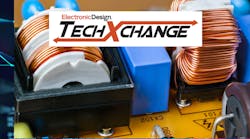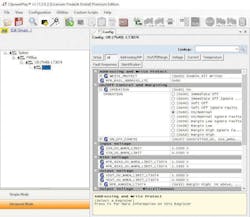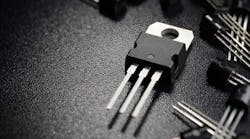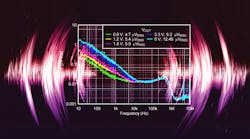Linear Regulators in a Digital Way
What you'll learn:
- The difference between a traditional LDO and a digital LDO.
- Features of the new type of single-chip digital LDO.
The linear regulator is a fundamental component in power electronics, designed to convert a higher input voltage into a stable, lower output voltage. These voltage converters behave like a dynamic resistor, which always adjusts to exactly the value that’s necessary to keep a set output voltage constant at a certain current flow.
With all of the easy-to-use, high-efficiency switch-mode power converters on the market, linear regulators are being used less frequently. However, there’s one situation where linear regulators are still very important: filtering the output voltages generated by switching regulators.
The switch-mode power supply (SMPS) shown in Figure 1 generates output ripple due to its switching nature. A linear regulator usually has a good power-supply rejection ratio (PSRR), which indicates how well it can reduce noise over a wide range of frequencies.
The Need for Ultra-Low-Noise Linear Regulators
For noise-sensitive applications, though, a standard linear regulator isn’t going to cut it. In these situations, ultra-low-noise linear regulators strike the right balance of efficiency and performance. In addition to their high PSRR values, these voltage regulators generate only very low noise, especially in the low frequency band between 1 Hz and 100 kHz.
Typical use cases for such low-noise power supplies include high- and low-bandwidth precision analog circuitry such as phase-locked loops (PLLs), voltage-controlled oscillators (VCOs), mixers, low-noise amplifiers (LNAs), and power amplifiers (PAs), as well as high-accuracy instrumentation applications.
>>Download the PDF of this article, and check out the TechXchange for similar articles and videos
For some of these implementations, it’s helpful to be able to detect the state of the power supply. The system can take advantage of information about the input voltage, output voltage, load current, and temperature of the linear regulator to confirm proper operation of the circuit.
Communications with a Digital LDO
Enter the digital LDO. A digital LDO is designed like a conventional ultra-low-noise LDO, but it adds a digital interface, specifically PMBus, to communicate data and optimize the operation of the power supply. Figure 2 depicts a system similar to the one in Figure 1, but it leverages the LT3074, a digital LDO.
Digital LDOs represent a new product category in power electronics. In the past, digital interface devices, such as the LTC2972, could be combined with an ultra-low-noise linear regulator, such as the LT3041. The tradeoff with this approach is that it increases solution size and complicates the circuit design.
With a new digital LDO, such as the LT3074, everything is combined in one IC. This linear regulator features a digital interface for setting parameters of the LDO, such as the current limit, output voltage, and telemetry, to pull information about the power supply’s operating state.
In the system, a microcontroller (MCU) communicates with the LDO (Fig. 2, again). In this case, LTpowerPlay can be used for evaluation. This is a free software tool that’s downloadable from Analog Devices’s website. It’s a graphical user interface (GUI) that communicates with the digital LDO via a USB to a PMBus interface (Fig. 3).
For years, engineers have struggled to integrate digital interfaces with ultra-low-noise low-dropout (LDO) regulators. The challenge stemmed from a fundamental incompatibility: digital, clocked circuits are notorious sources of noise, which ultra-low-noise analog circuits are ultimately trying to avoid. Combining the two on a single chip without degrading performance has been quite difficult. With LT3074, which has an RMS noise of 1.2 μV RMS from 10 Hz to 100 kHz, this combination has been achieved.
It marks a significant innovation in the realm of linear regulators, opening the door to the first truly digital LDO. Such devices will help usher in more advanced systems in the RF field as well as in instrumentation and medical applications. Systems will be more robust due to the integrated telemetry feature, more feature rich due to the adjustability of parameters, and smaller due to the high level of integration.
Related Articles on LDOs
>>Download the PDF of this article, and check out the TechXchange for similar articles and videos
About the Author

Frederik Dostal
Power-Management Technical Expert
Frederik Dostal is a power-management expert with more than 20 years of experience in this industry. After his studies of microelectronics at the University of Erlangen, Germany, he joined National Semiconductor in 2001, where he worked as a field applications engineer, gaining a lot of experience in implementing power-management solutions in customer projects. During his time at National, he also spent four years in Phoenix, Arizona (USA), working on switch-mode power supplies as an applications engineer.
In 2009, he joined Analog Devices, where since then he held a variety of positions working for the product line and European technical support, and currently brings in his broad design and application knowledge as a power-management expert. Frederik works in the ADI office in Munich, Germany.
Also check out my:








